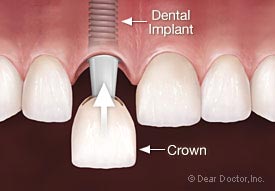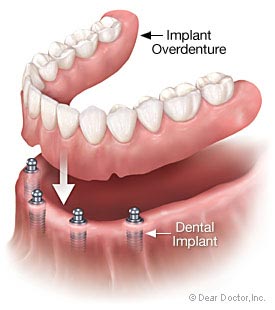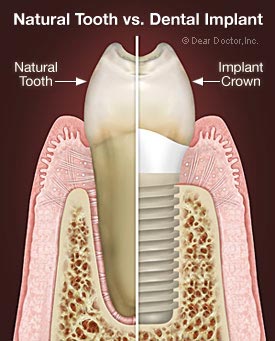Dental Implants
[vc_row full_height=”yes” equal_height=”yes” content_placement=”middle” video_bg=”yes” video_bg_url=”https://youtu.be/SUqylreB0QY” video_bg_parallax=”content-moving”][vc_column][vc_video link=”https://youtu.be/SUqylreB0QY”][vc_column_text]
Why are dental implants often the best
treatment option for replacing missing teeth?
[/vc_column_text][/vc_column][/vc_row][vc_row][vc_column width=”1/2″][vc_custom_heading text=”Am I a candidate for dental implants?
” google_fonts=”font_family:Oswald%3A300%2Cregular%2C700|font_style:400%20regular%3A400%3Anormal”][vc_column_text]Generally speaking, if you have lost teeth you are a candidate for dental implants. It is important that you are in good health, however, as there are some conditions and diseases that can affect whether dental implants are right for you. For example, uncontrolled diabetes, cancer, radiation to the jaws, smoking, alcoholism, or uncontrolled periodontal (gum) disease may affect whether dental implants will fuse to your bone. It is important to let your dental surgeon know all about your medical status (past and present) together with all medications you are taking, whether prescribed, alternative (herbal) or over-the-counter.
Where and how implants are placed requires a detailed assessment of your overall stomato-gnathic system (“stoma” – mouth; “gnathic” – jaws), within which the teeth function. This will necessitate compiling records that include study models of your mouth and bite, and specialized radiographs (x-rays), which may include 3D scans known as computerized tomograms (CT scans). Planning with the help of computer imaging ensures that dental implants can be placed in exactly the right position in the bone.[/vc_column_text][/vc_column][vc_column width=”1/2″][vc_video link=”https://youtu.be/hSCH0alx-Vg”][/vc_column][/vc_row][vc_row][vc_column width=”1/2″][vc_video link=”https://youtu.be/K6xwnnNtoO0″ title=”Dental Implant FAQ”][/vc_column][vc_column width=”1/2″][vc_custom_heading text=”Frequently asked Questions about Dental Implants.
” google_fonts=”font_family:Oswald%3A300%2Cregular%2C700|font_style:400%20regular%3A400%3Anormal”][vc_column_text]How and why is bone lost when teeth are lost?
Bone needs stimulation to maintain its form and density. In the case of alveolar (sac-like) bone that surrounds and supports teeth, the necessary stimulation comes from the teeth themselves. When a tooth is lost, the lack of stimulation causes loss of alveolar bone. There is a 25% decrease in width of bone during the first year after tooth loss and an overall decrease in height over the next few years.
The more teeth lost, the more function lost. This leads to some particularly serious aesthetic and functional problems, particularly in people who have lost all of their teeth. And it doesn’t stop there. After alveolar bone is lost, the bone beneath it, basal bone — the jawbone proper — also begins to resorb (melt away).
How can bone be preserved or re-grown to support dental implants?
Grafting bone into the extraction sockets at the time of tooth loss or removal can help preserve bone volume needed for implant placement. Surgical techniques are also available to regenerate (re-grow) bone that has been lost, to provide the necessary bone substance for anchoring implants. In fact, a primary reason to consider dental implants to replace missing teeth is the maintenance of jawbone.
Bone needs stimulation to stay healthy. Because dental implants fuse to the bone, they stabilize it and prevent further bone loss. Resorption is a normal and inevitable process in which bone is lost when it is no longer supporting or connected to teeth. Only dental implants can stop this process and preserve the bone.
How are dental implants placed and who places them?
It takes a dental team to assess and plan dental implant placement and restoration — the fabrication of the crowns, bridgework or dentures that attach atop the implants and are visible in your mouth. The dental team consists of a dental surgical specialist — a periodontist, oral surgeon, or a general dentist with advanced training in implant surgery; a restorative dentist, who plans and places the tooth restorations; and a dental laboratory technician who fabricates them.
Placing dental implants requires a surgical procedure in which precision channels are created in the jawbone, often using a surgical guide. The implants are then fitted into the sites so that they are in intimate contact with the bone. They generally require two to six months to fuse to the bone before they can have tooth restorations attached to them to complete the process.
[/vc_column_text][vc_custom_heading text=”What are the options for implant tooth replacement?
” google_fonts=”font_family:Oswald%3A300%2Cregular%2C700|font_style:400%20regular%3A400%3Anormal”][/vc_column][/vc_row][vc_row][vc_column][vc_tta_tabs style=”modern” autoplay=”10″ active_section=”1″][vc_tta_section title=”Single Tooth Replacement:” tab_id=”1489102504981-284a8238-1fef”][vc_column_text]
Immediately (at the same time an implant is placed) or after a period of healing, an abutment is attached to the implant. This is a device that “abuts” or joins the implant to a tooth form called a crown, which replaces the tooth part you see in the mouth. It will hold a custom-made crown that the dental laboratory will fabricate and match to your existing teeth. The custom crown is cemented or screwed onto the abutment to permanently keep it in place. Once the crown is in place, it should be indistinguishable from your natural teeth.[/vc_column_text][/vc_tta_section][vc_tta_section title=”Fixed Multiple Tooth Replacement” tab_id=”1489102505088-e36e4636-36cd”][vc_column_text]
[/vc_column_text][/vc_tta_section][vc_tta_section title=”Removable Implant-Supported Tooth Replacement” tab_id=”1489102952764-437be0f8-a379″][vc_column_text]

[/vc_column_text][/vc_tta_section][vc_tta_section title=”How do implant tooth replacements differ from teeth? ” tab_id=”1489104210096-0c2c5744-1712″][vc_column_text]Natural teeth and dental implants may look the same, feel the same, and even function in a similar way, but they are very different. The most important differences are in the way they attach to the surrounding bone, their response to dental disease, their maintenance, and repair.

Teeth attach to the surrounding bone by a periodontal ligament (“peri” – around; “dont” – tooth) made up of collagen fibers that join into the tooth on one side and bone on the other. Dental implants fuse directly to the bone.
The gum tissues also attach to the root of a tooth with collagen fibers as described above. However, gum tissues can only stick to the surface of dental implants.
Teeth are susceptible to dental decay as well as the need for root canal therapy; dental implants are metal and do not decay or need root canal. Teeth may also be susceptible to periodontal (gum) disease, while dental implants may be susceptible to peri-implantitis, an inflammatory response to bacterial biofilm of the tissues surrounding the implant, which can result in disintegration of the bone to the implant.[/vc_column_text][/vc_tta_section][vc_tta_section title=”What type of maintenance do dental implants require?” tab_id=”1489104211976-96129525-0064″][vc_column_text]Implant crowns and other prosthetic (false) tooth replacements are made to be remarkably fail safe systems. They are removable and replaceable (only by your dentist), so that if damage or wear necessitates replacement, this can be accomplished without affecting the implant(s) or attachment to the bone.
Nevertheless, implants do require maintenance. It is important to practice good daily oral hygiene, including brushing and flossing to control bacterial biofilm. It is also important to see your dentist and dental hygienist. Special instruments are necessary to clean dental implants that will not damage their metal surface beneath the gum tissues. Your dentist will need to monitor your implants to make sure the integrity of the osseointegration is stable, and that the implant crowns, bridgework or dentures are functioning adequately.[/vc_column_text][/vc_tta_section][vc_tta_section title=”Consequences of Missing Teeth” tab_id=”1489110177045-d404645e-95d0″][vc_video link=”https://youtu.be/lyLdmmnOTJI”][/vc_tta_section][vc_tta_section title=”How to Choose An Implant Dentist” tab_id=”1489110244612-7babe890-40d3″][vc_video link=”https://youtu.be/Bmz2U51l-uE”][/vc_tta_section][/vc_tta_tabs]
[/vc_column][/vc_row]